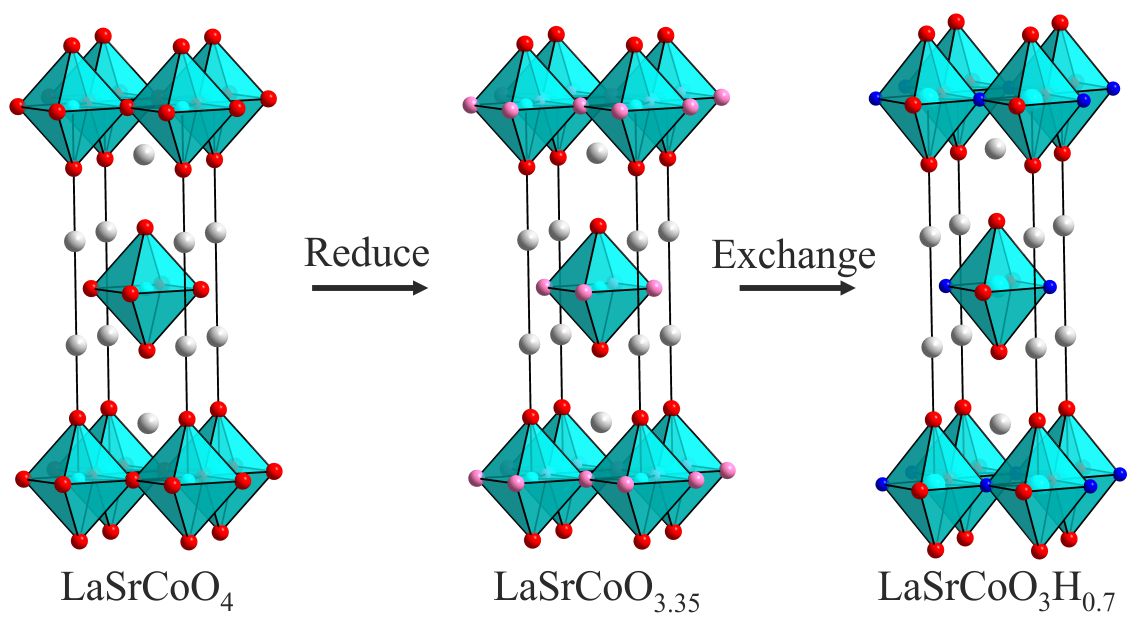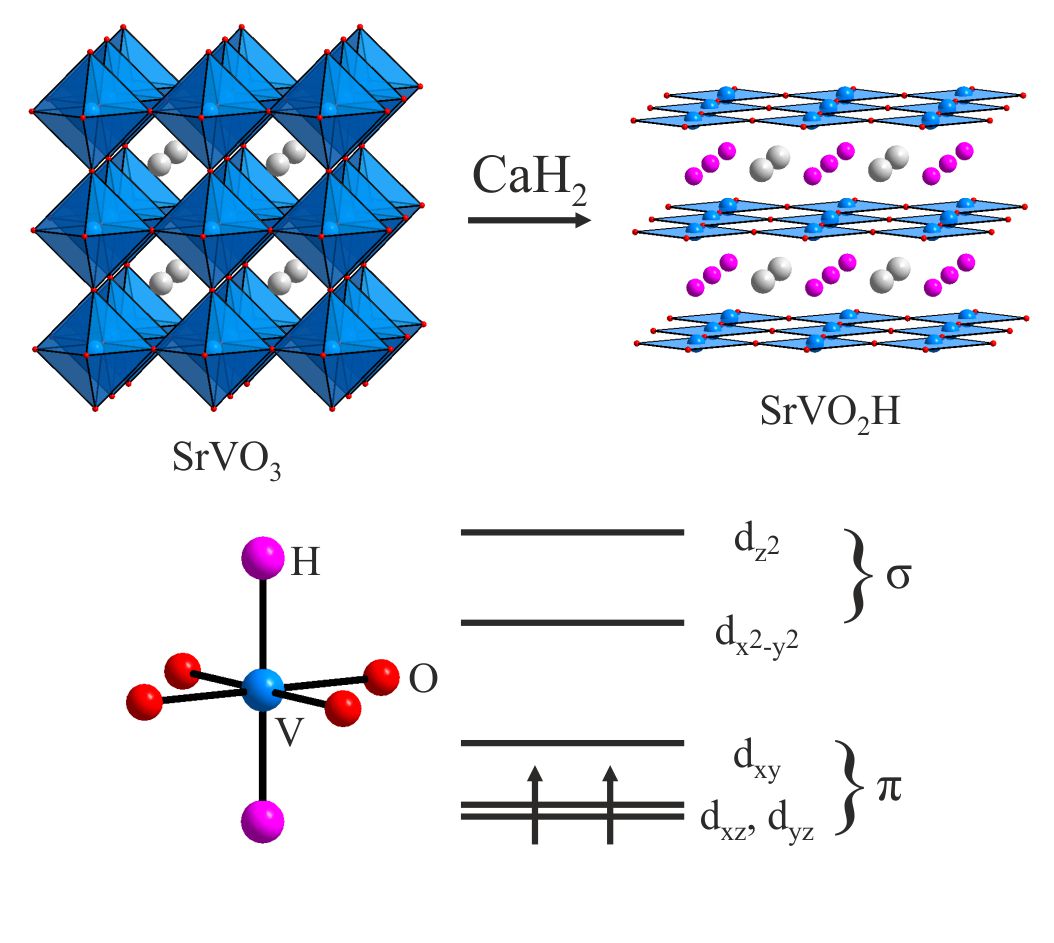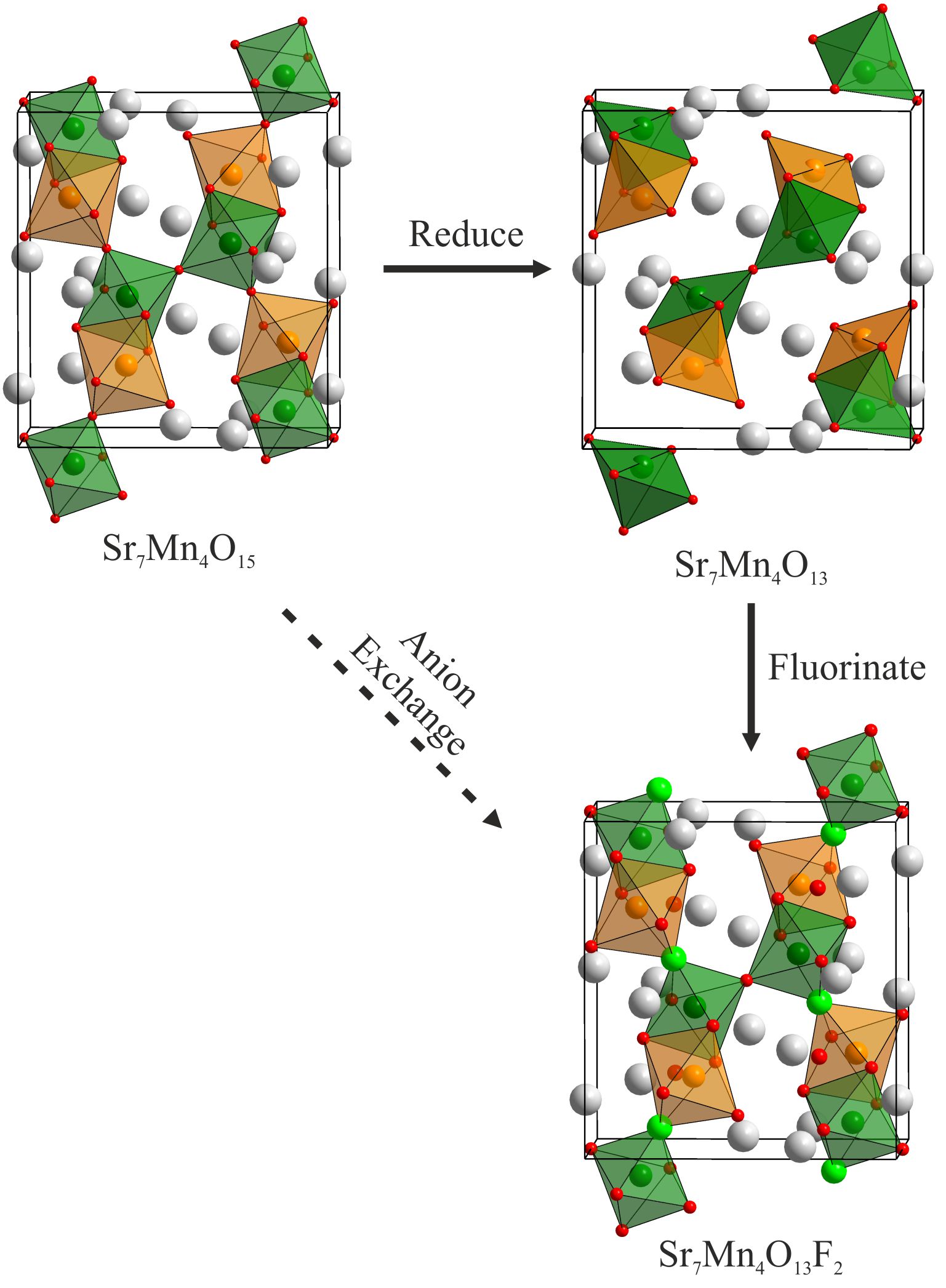
 |
| Home | Research | Publications | People | Joining the Group | Teaching |
|
In addition to being inserted or extracted, the oxide anions in extended solids can also be exchanged for different anions via topochemical reactions. By performing aliovalent anion exchange reactions (replacing O2- oxide ions with anions of a different charge) both the oxidation states and local coordination environments of metal centers within extended solids can be modified, thus modifying the physical behaviour of these materials. |
|
Oxide-Hydride Formation In addition to topochemical reductions, binary metal hydrides can bring about anion-exchange reactions to yield oxide-hydride phases. For example reaction between LaSrCoO4 and CaH2 initial forms the reduced phase LaSrCoO3.35. Further heating facilitates an anion-exchange reaction to yield LaSrCoO3H0.7, which was the first transition metal oxide-hydride phase to be reported. Chemistry of Materials, 12 (2000) 2182. |
 |
 |
More recently we have prepared SrVO2H by reaction between SrVO3 and CaH2. SrVO2H is the first stoichiometric, anion-ordered, transition metal oxide-hydride phase reported. The oxide-hydride anion order in this phase means the structure of SrVO2H consists of V3+ cations located within square-planes of oxide ions. These V3+O4 units share corners to form infinite VO2 sheets directly analogous the CuO2 planes observed in Sr1-xCaxCuO2, the parent phase of the high-Tc superconducting cuprates. However unlike Sr1-xCaxCuO2 the VO2 sheets in SrVO2H are connected via the hydride ions which occupy the remaining two coordination sites around each V3+ center. Despite the formal 6-fold VO4H2 coordination of the vanadium centers in SrVO2H, there is a direct structural and electronic analogy between this phase and the infinite-layer ABO2 phases. This is because the 1s valence orbitals of the hydride ions have strict sigma-type symmetry with respect to the vanadium cations and are thus orthogonal to the pi symmetry dxz, dyz and dxy orbitals from which the HOMO (a degenerate (dxz, dyz)2 pair) and LUMO (the dxy orbital) of the local VO4H2 unit are derived. Thus to a first approximation the d-electrons in SrVO2H only ‘see’ the infinite layer V-O framework, as the sigma-type vanadium d-orbitals which do interact with the H 1s orbitals are empty and energetically remote from the filled orbitals. As a result SrVO2H can be considered directly analogous to a d2 infinite-layer system, such as the hypothetical phase ‘KVO2’ in which the SrH layers are replaced by layers of potassium cations. Angewandte Chemie, 53 (2014) 7556. |
|
2-Step Anion Excahnge Anions in complex oxide phases can also be substituted by a 2-step reduce-then-oxidize route. For example, Sr7Mn4O15 can be topochemically reduced to the anion-vacancy ordered phase Sr7Mn4O13. Subsequent fluorination of this reduced material yields the anion-ordered oxide-fluoride Sr7Mn4O13F2 in which the oxide/fluoride ordering arrangement is patterned by the anion-vacancy order in the reduced intermediate phase. Journal of Solid State Chemistry, 180 (2007) 2851. |
 |